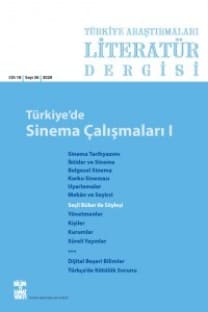Osmanlı Devletinde Matbuat ve Neşriyat Yasakları Tarihine Medhal
Osmanlı Devleti'nde matbuat hayatı geliştikçe beraberinde matbuat mevzuatı da gelişmiş ve matbaalar ve basılı malzemeler, yâni kitaplar, mecmualar ve gazeteler hakkında da kanunlar çıkarılmıştır. Bu sahanın teftişi ve cemiyetin ve tabiî aynı zamanda devletin temel değerlerinin gelişen basılı kültür araçlarına karşı korunması için getirilen yasaklar ve bilhassa bu yasakların II. Abdülhamit Devri günümüze kadar tartışılmıştır ve halen de tartışılmaktadır. Diğer taraftan yurt dışından gelen neşriyata konulan yasaklar da aynı şekilde bu yasakları takbihi yaklaşımıyla incelenmekte ve gündeme getirilmektedir. Bununla beraber bu mevzu araştırma dışında tutulmuştur. Bir cemiyetin yasakları içtimâî ve zihnî yapısının en kıymetli vesikaları hükmünde iken bu zamana kadar bu bakımdan değerlendirilmemiş olmaları yakın çağ tarihimiz ve tarihçiliğimiz için büyük bir kayıptır. Osmanlı Devleti'nin bilhassa Garp kurumlarını bir taraftan iktibas ve diğer taraftan kendisini Garba karşı korumak gibi çok zor iki işi aynı anda yapmak mecburiyetinde kalmasına sahne olan XIX. asırda matbaayı bir ıslahat âleti olarak görüp benimsemesi ve yayılmasını desteklemesi, diğer taraftan da kullanılmasını bir mevzuata kavuşturması ve bu âletin istenmeyen yönde kullanılmasına engeller getirmesini daha yakından tetkik etmek dikkate değer neticeler vermektedir. Bir taraftan basım işlerinin bir nizama kavuşturulması, diğer taraftan da matbaacılığın teşvik edilmesi matbaaya ve matbuata ne kadar büyük bir ehemmiyet verildiğini göstermektedir. Basılacak şeylerin basılmadan önce ve sonra teftişini yapan kurumların ve bilhassa Encümen-i Teftiş ve Muayene'nin kuruluşuna varan teşkilât gelişmesinin de matbuat hayatının gelişmesiyle yan yana yürümesi tabiî bir vakıa olarak ortadadır. Bilhassa Garp'tan gelen ve bir kısmı siyasî ve bir kısmı ise edebî sebeplerle yasaklanan kitapların niçin yasaklandığı ise bu gibi kitapların doğrudan doğruya bir muhteva tahlilinden geçirilmeleriyle mümkün olabilecektir. Ancak bu türden araştırmalara dayanan yorumların tarihçilik ve tarihimiz için bir kazanç olacağı açıktır. Burada işaret edilmesi gereken başka bir gerçek de matbuat yasakları bakımından bir felâket devri olarak gösterilen II.Abdülhamit devrinin önceki ve sonraki devirlerden bir farkı bulunmadığıdır.
Introduction to Censors in the Ottoman Printing Press and Publications
As the printing life evolved in the Ottoman Empire, it was followed by regulations on printing. In a short while, laws concerning the printing press and printed works like books, journals and newspapers were introduced. The censors implemented for a closer inspection of this field and also the protection of the fundamental values of state against the printed vehicles of culture especially during the Hamidian Era have ignited heated disputes until the present times. On the other hand, the censors imposed on publications coming from abroad have been examined and brought up by the same disgraceful approach. Yet, this topic is excluded from the research. While the censors of a society constitute the most valuable documents of its social and intellectual structure, it is a great handicap of our historiography that they have not been evaluated from this perspective until recently. The nineteenth century was the scene to a harsh dichotomy in the Ottoman Empire in the sense that the state had to simultaneously adopt the two measures of both imitating the Western institutions and defending itself against the West. In the meantime, while the printing press was perceived and supported as a tool of reformation, its usage was also subject to regulations and its undesired usage was as such prevented. A closer analysis of this complicated situation is sure to unearth striking conclusions. The distinctive regulations of the press, on the one hand, and its enthusiastic encouragement on the other hand bear witness to the importance ascribed to the printing press. The development of institutions responsible for the inspection of printed material prior to and following the process such as Encümen-i Teftiş ve Muayene in paralel to the development of printing life can be evaluated within the natural course of events. The actual reasons why books imported from the West for political and literary reasons were prohibited, however, can be known only after a thorough analysis of their contents. It is evident that interpretations based on such research would be a major gain for our historiography. Another point to be emphasized in this context is that the Hamidian Era, traditionally depicted as catastrophic period for its printing censorship, did not in fact differ from either previous or later periods on a great scale.
Keywords:
Book, censor, printing press, printed works, II Abdulhamid.,
- ISSN: 1303-9369
- Başlangıç: 2003
- Yayıncı: Bilim ve Sanat Vakfı
Sayıdaki Diğer Makaleler
Tanzimattan Cumhuriyete Türk Tiyatro Edebiyatı Literatürü
Tanzimattan Cumhuriyete Edebiyat Ders Kitapları
Dergiler Arasında: Dergâh, Hayat, Ma?lûmât ve Bilgi Mecmuaları
Osmanlı Devletinde Matbuat ve Neşriyat Yasakları Tarihine Medhal
Başlangıcından Cumhuriyete Kadar Ana Çizgileriyle Türk Hikâyesi
Yeni Türk Edebiyatında Edebiyat Teorisi Literatürü Üzerine Bir Deneme
